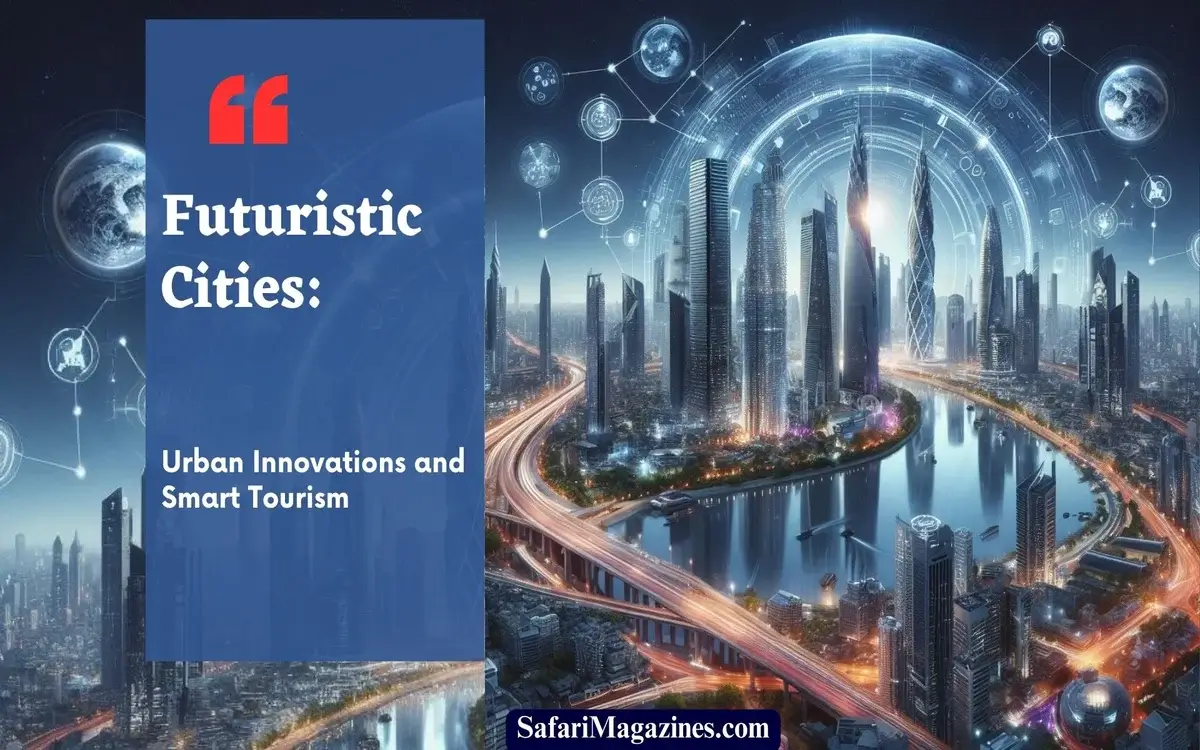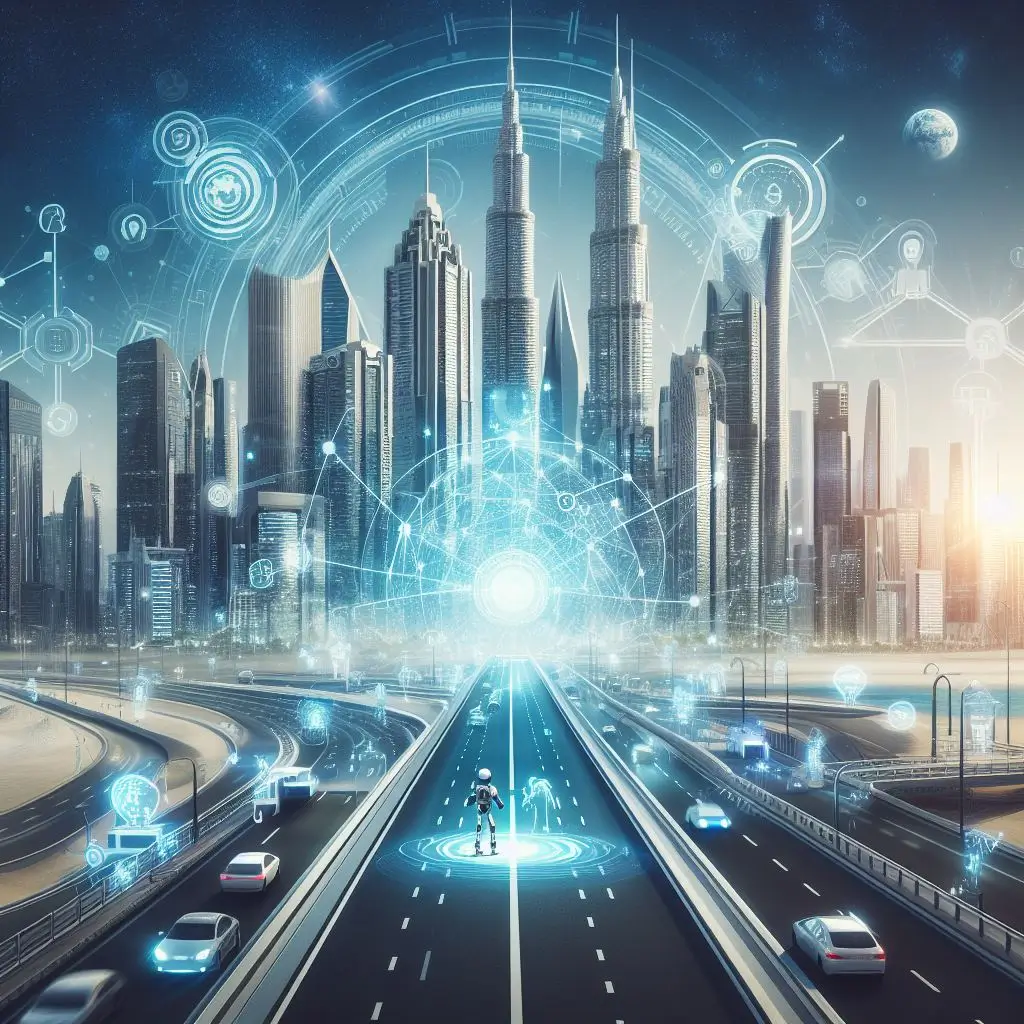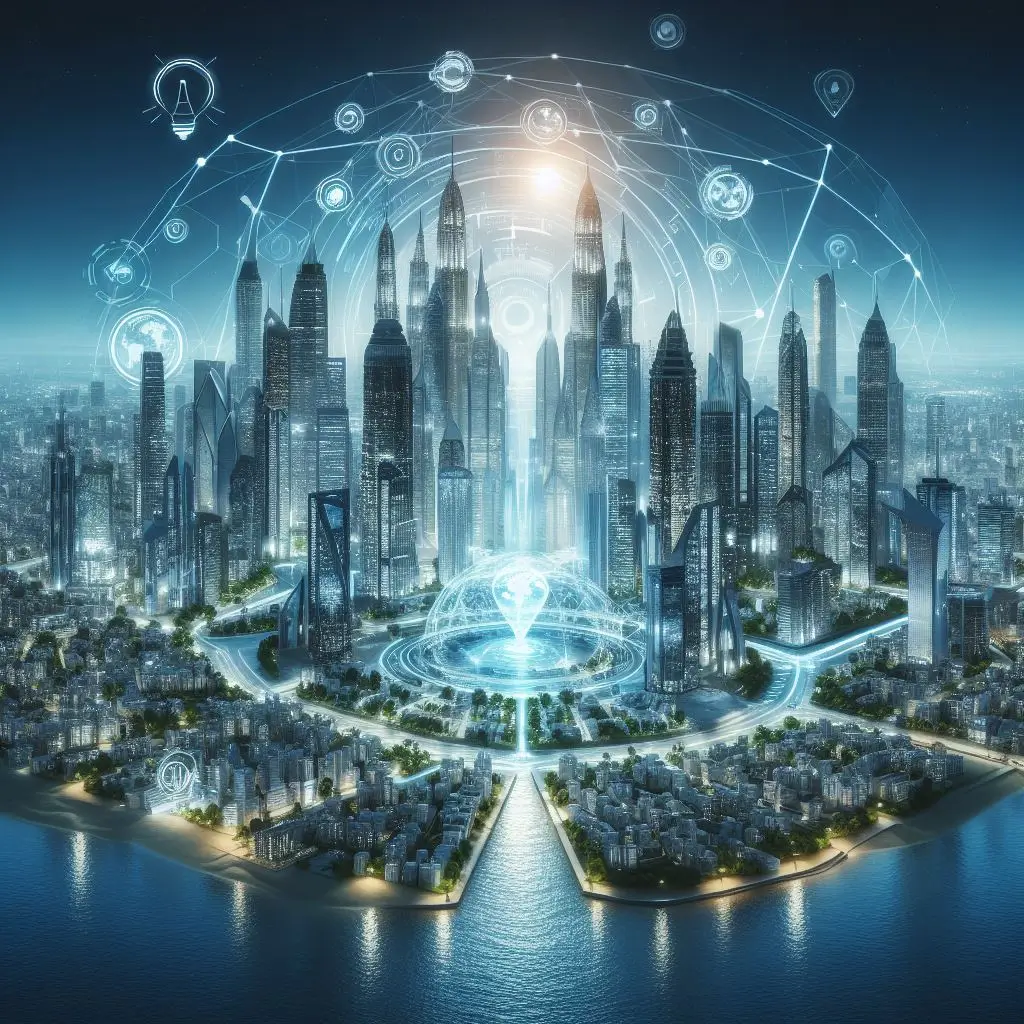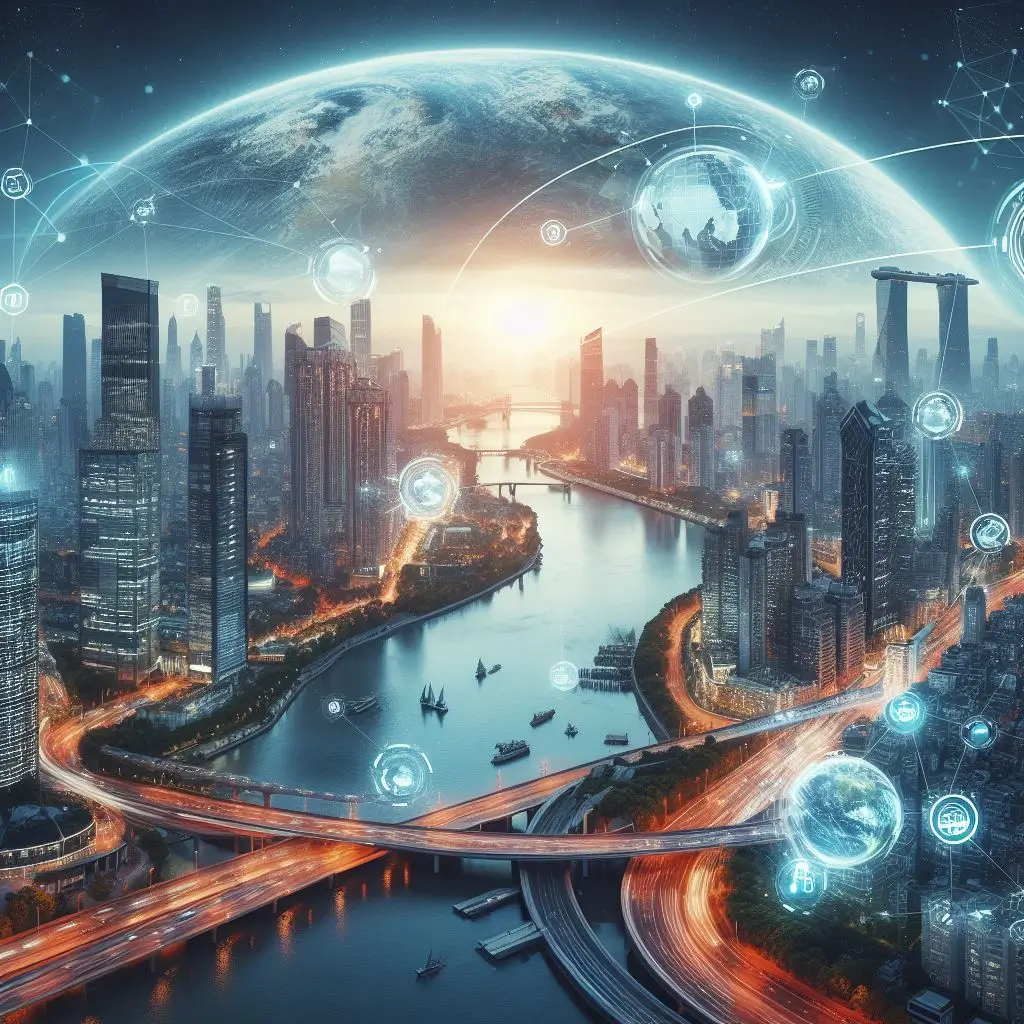
Futuristic Cities, Urban Innovations and Smart Tourism. In the world of urban development, the concept of futuristic cities has emerged as a symbol of innovation and progress. Driven by urban innovations and embracing smart tourism, these cities represent an example of human creativity and technological progress. As we dive deep into the intricacies of these urban landscapes, it becomes clear that , the future of our economy and communities will be shaped by them.
Table of Contents
ToggleOverview of Futuristic Cities

The future city embodies a vision of an advanced urban environment where advanced technologies and sustainable practices come together to create a balanced ecosystem. Urban innovations are important to turn this vision into reality. For example, it paves the way for transformative changes in the way we live, work, and interact within urban spaces. In addition, the rise of smart tourism highlights the importance of using technology to enhance the visitor experience and encourage sustainable tourism practices.
Key Features of Futuristic Cities
At the core of futuristic cities lie several key features that set them apart from traditional urban landscapes. These include sustainable infrastructure, advanced technology integration, efficient transportation systems, and a strong emphasis on green spaces and eco-friendly initiatives. By prioritizing these aspects, futuristic cities strive to create environments that are not only technologically advanced but also environmentally sustainable and socially inclusive.
Continue reading: Futuristic Cities: Urban Innovations and Smart Tourism
Urban Innovations Driving Future Cities
The evolution of futuristic cities is propelled by a myriad of urban innovations that are reshaping the urban landscape. From renewable energy solutions to smart grid management and advanced waste management technologies. These innovations are instrumental in creating resilient and resource-efficient urban environments. Moreover, the integration of IoT devices and connectivity infrastructure lays the foundation for a truly interconnected and intelligent urban ecosystem.
Smart Cities and Sustainable Tourism Initiatives

Smart cities and sustainable tourism initiatives represent a symbiotic relationship that aims to create vibrant and resilient urban destinations. The Smart cities use the latest technologies to optimize urban infrastructure, enhance connectivity, and improve the quality of life for residents and visitors alike. By incorporating sustainable tourism practices into their urban fabric, these cities aim to minimize environmental impact while maximizing economic and social benefits.
Technologies driving smart cities
Smart cities use a variety of technologies to improve transportation networks, control energy consumption and enhance public services. From intelligent traffic management systems to sensor-based waste management solutions, these innovations contribute to more efficient and sustainable urban environments. Smart cities make their destinations more welcoming and enjoyable experience for tourists while protecting their natural beauty and cultural history. This is achieved by reducing traffic, conserving resources and improving air quality.
Examples of Smart Cities with Sustainable Tourism Initiatives
In parallel, sustainable tourism initiatives play an important role in promoting responsible travel practices and fostering a deeper appreciation for local cultures and ecosystems. So, from eco-friendly accommodation to community-based tourism projects. Travelers can experience places in a way that reduces their environmental impact and supports local communities. By putting sustainability first, smart cities ensure that tourism remains a force for positive change, contributing to the preservation of natural resources and cultural heritage for future generations.
Continue reading: Futuristic Cities: Urban Innovations and Smart Tourism
High-Tech Travel: Experiencing the Cities of Tomorrow

High-tech travel experiences offer visitors a insight into the possibilities of urban innovation. So, it allowing them to interact with cutting-edge technologies and experience the city from a new perspective. From augmented reality walking tours to drone photography excursions. Travelers are embracing technology to explore destinations in innovative and exciting ways. In futuristic cities, high-tech travel experiences include a wide range of innovative technologies and services. Therefore, it enhances comfort, safety and enjoyment of travel experiences.
Examples of high-tech travel experiences
One example of high-tech travel in futuristic cities is the use of virtual reality (VR) and augmented reality (AR) to create immersive cultural experiences. So, travelers can use VR headsets headsets to explore historical landmarks, museums and cultural sites in a virtual environment, taking insight into the city’s history and heritage. Similarly, AR apps allow visitors to overlay digital information onto their physical surroundings, providing context and information about points of interest as they explore the city.
Integration of high-tech travel in futuristic cities
Futuristic Cities offer a variety of advanced technologies and services for high-tech travel. In addition to virtual reality (VR) and augmented reality (AR) experiences, visitors can enjoy self-driving cars, electric scooters, drone delivery services, and smart hotel rooms. Therefore, Futuristic Cities offers visitors the opportunity to immerse themselves in the cities of tomorrow, where innovation and technology come together to create unforgettable experiences.
Continue reading: Futuristic Cities: Urban Innovations and Smart Tourism
Impact of Futuristic Cities on Society
The proliferation of futuristic cities has profound implications for society at large. Besides driving economic growth and job creation, these cities also provide an improved quality of life for their residents. Therefore, by putting environmental sustainability first, futuristic cities seek to create environments sustainability to the well-being and prosperity of all citizens while adopting comprehensive urban development strategies.
Smart Tourism: A Catalyst for Futuristic Cities
The idea of “smart tourism” is completely changing the way we see and interact with urban surroundings in the travel industry. By leveraging technology to offer personalized experiences for visitors, smart tourism initiatives are redefining the tourism landscape and driving economic growth in futuristic cities. Moreover, by promoting sustainable tourism practices, these initiatives ensure that tourism remains a force for positive change in urban environments.
Examples of Futuristic Cities Around the World
Several cities around the world serve as shining examples of futuristic urban development. Singapore is known as the Smart Nation for its advancements in using technology to improve city life. Similarly, Dubai, on the other hand, has established itself as a futuristic city with projects like the Dubai Smart City initiative. Barcelona and Amsterdam are also leading the charge in sustainable urban development and smart city initiatives.
Continue reading: Futuristic Cities: Urban Innovations and Smart Tourism
Challenges and Considerations
However, the journey towards futuristic cities is not without its challenges. Privacy concerns and data security issues pose significant hurdles to the widespread adoption of smart technologies. Furthermore, the digital divide and accessibility issues threaten to exacerbate existing inequalities within urban communities. To guarantee that everyone can profit from futuristic cities, legislators, urban planners, and technology companies must work together to address these issues.
Future Outlook and Opportunities
Looking ahead, the future of futuristic cities is bright, with opportunities for continued innovation and collaboration. We can design technologically advanced, socially and environmentally sustainable cities by using a comprehensive, holistic approach to city planning. Furthermore, the burgeoning smart tourism sector presents exciting opportunities for economic growth and innovation in futuristic cities.
Read more:
The World is a Small Village: Embracing Global Interconnectedness
Conclusion
In conclusion, futuristic cities represent the pinnacle of urban innovation and smart tourism. These cities can use technology and sustainable practices to create livable, resilient, inclusive, and dynamic ecosystems. As we set out on this journey towards the cities of the future, let’s work to create communities based on sustainability, equity, and creativity .
FAQs
Q1: What defines a futuristic city?
A1: A futuristic city is known for its advanced urban innovations, sustainable infrastructure, and a strong focus on integrating technology to improve the residents’ quality of life.
Q2: How does smart tourism contribute to futuristic cities?
A2: Smart tourism initiatives leverage technology to offer personalized experiences for visitors, driving economic growth and promoting sustainable tourism practices in futuristic cities.
Q3: What are some examples of futuristic cities around the world?
A3: Cities like Singapore, Dubai, Barcelona, and Amsterdam are at the forefront of futuristic urban development. They are implementing sustainable, innovative, and technologically advanced initiatives.
Q4: What challenges do futuristic cities face?
A4: Privacy concerns, digital divide issues, and accessibility challenges are some of the key hurdles that futuristic cities must overcome to ensure that the benefits of urban innovation are accessible to all citizens.
Q5: What is the future outlook for futuristic cities?
A5: The futuristic of cities with advanced technology is promising, as there are chances for further progress, teamwork, and expansion in areas like intelligent tourism and eco-friendly urban development.
